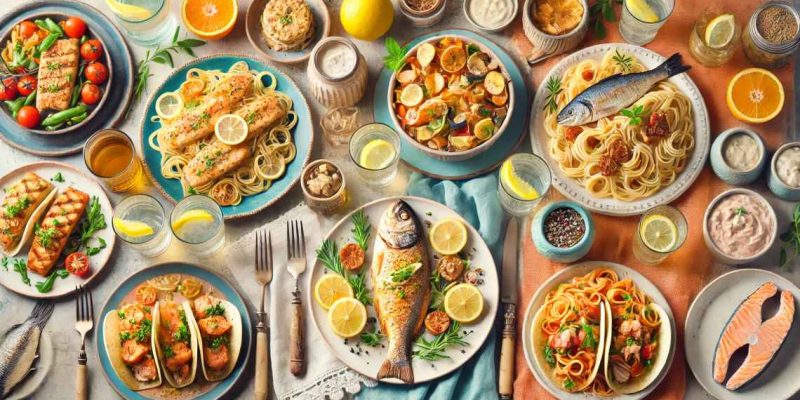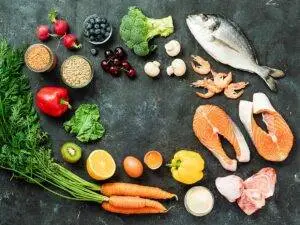Introduction:
Looking for a delicious and budget-friendly meal? Look no further than these 5 easy, cheap fish dinners! Fish is a fantastic source of lean protein packed with heart-healthy omega-3 fatty acids, vitamins, and minerals. These affordable recipes prove you don’t need to break the bank to enjoy nutritious and tasty seafood dishes. Whether you’re a seasoned cook or just starting in the kitchen, these cheap fish dinners are perfect for anyone looking to incorporate more seafood into their diet without straining their wallet.
1. Lemon Garlic Tilapia
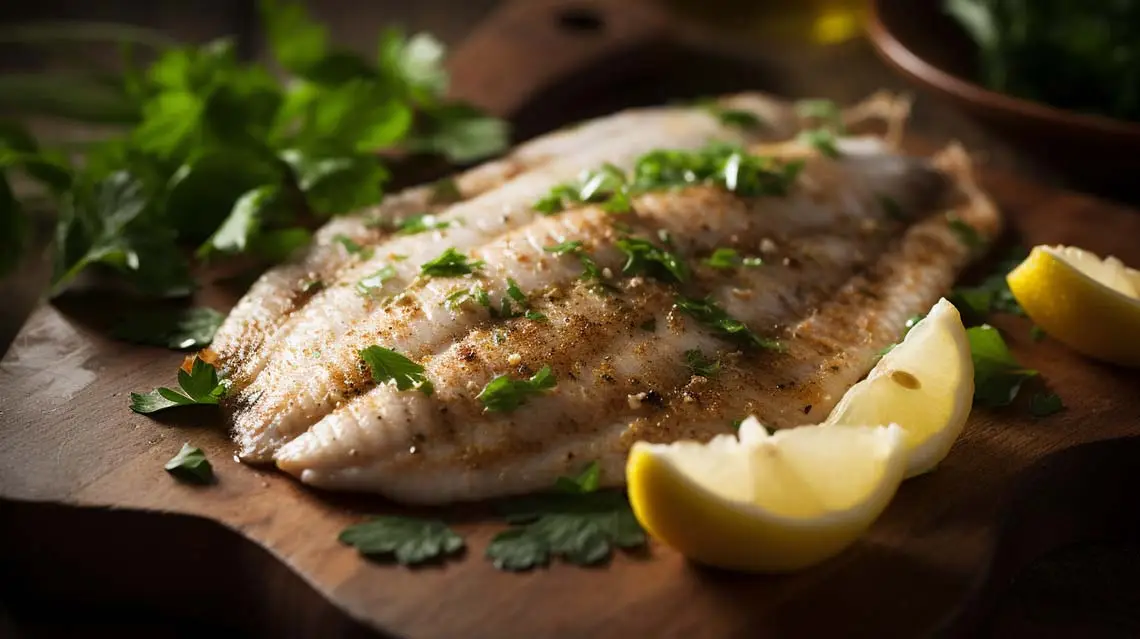
Nutrition Facts (per serving):
Calories: 200
Protein: 28g
Fat: 8g
Carbohydrates: 4g
Fiber: 1g
Ingredients:
– 4 tilapia fillets (about 4 oz each)
– 2 tablespoons olive oil
– 2 cloves garlic, minced
– 1 lemon, juiced and zested
– 1 teaspoon dried oregano
– Salt and pepper to taste
– Fresh parsley for garnish
Instructions:
1. Preheat the oven to 400°F (200°C).
2. mix olive oil, minced garlic, lemon juice, lemon zest, and oregano in a small bowl.
3. Place tilapia fillets in a baking dish and season with salt and pepper.
4. Pour the lemon-garlic mixture over the fish.
5. Bake for 10-12 minutes or until the fish flakes easily with a fork.
6. Garnish with fresh parsley and serve with your choice of sides.
2. Tuna Pasta Salad
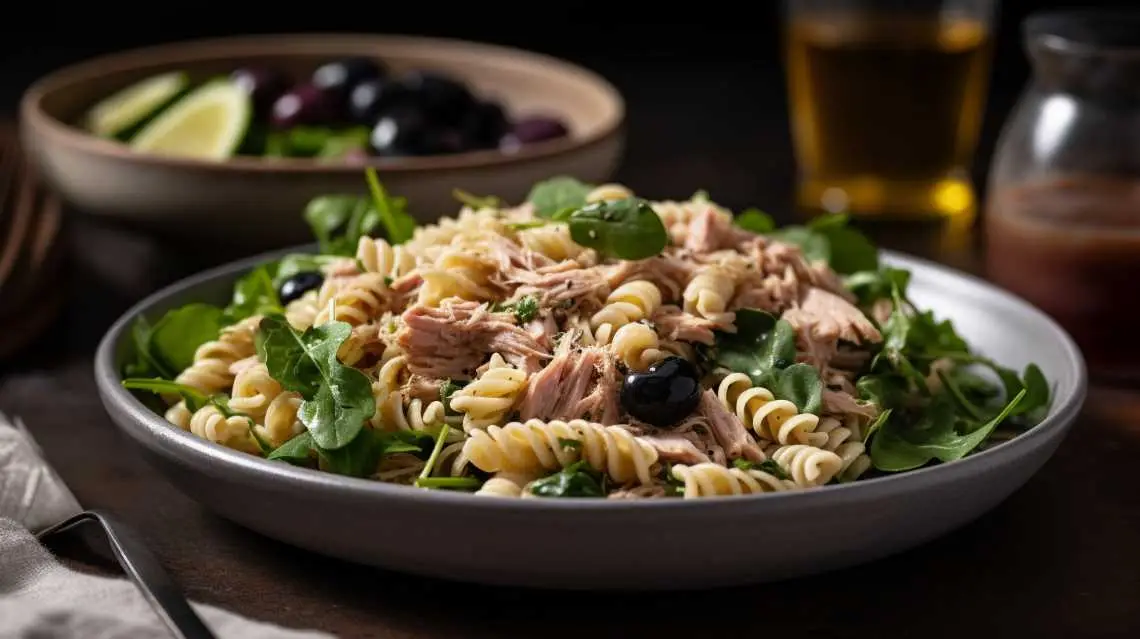
Nutrition Facts (per serving):
Calories: 350
Protein: 20g
Fat: 12g
Carbohydrates: 45g
Fiber: 3g
Ingredients:
– 8 oz whole wheat pasta
– 2 cans (5 oz each) of canned tuna, drained
– 1 cup cherry tomatoes, halved
– 1/2 cucumber, diced
– 1/4 red onion, finely chopped
– 1/4 cup olive oil
– 2 tablespoons lemon juice
– 1 teaspoon dried dill
– Salt and pepper to taste
Instructions:
1. Cook pasta according to package instructions. Drain and let cool.
2. combine cooled pasta, tuna, tomatoes, cucumber, and red onion in a large bowl.
3. whisk olive oil, lemon juice, dill, salt, and pepper in a small bowl.
4. Pour the dressing over the pasta mixture and toss to combine.
5. Chill for at least 30 minutes before serving.
3. Baked Salmon with Honey Mustard Glaze
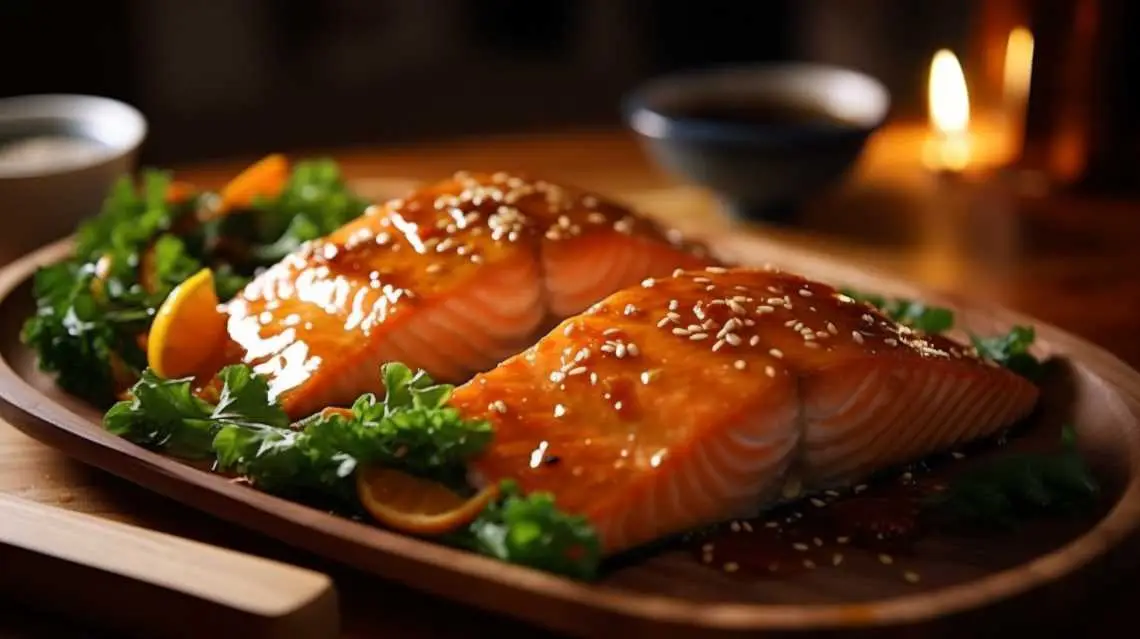
Nutrition Facts (per serving):
Calories: 300
Protein: 29g
Fat: 18g
Carbohydrates: 8g
Fibre: 0g
Ingredients:
– 4 salmon fillets (about 4 oz each)
– 2 tablespoons honey
– 2 tablespoons Dijon mustard
– 1 tablespoon olive oil
– 1 clove garlic, minced
– Salt and pepper to taste
Instructions:
1. Preheat the oven to 400°F (200°C).
2. mix honey, Dijon mustard, olive oil, and minced garlic in a small bowl.
3. Place salmon fillets on a lined baking sheet and season with salt and pepper.
4. Brush the honey mustard mixture over the salmon.
5. Bake for 12-15 minutes or until the salmon flakes easily with a fork.
6. Serve with steamed vegetables or a side salad.
4. Fish Tacos

Nutrition Facts (per serving – 2 tacos):
Calories: 380
Protein: 24g
Fat: 18g
Carbohydrates: 35g
Fiber: 4g
Ingredients:
– 1 lb white fish fillets (such as cod or tilapia)
– 1 tablespoon olive oil
– 1 teaspoon chili powder
– 1/2 teaspoon cumin
– Salt and pepper to taste
– 8 small corn tortillas
– 1 cup shredded cabbage
– 1/2 cup Greek yogurt
– 1 lime, juiced
– 1/4 cup cilantro, chopped
– 1 avocado, sliced (optional)
Instructions:
1. Preheat oven to 375°F (190°C).
2. Mix olive oil, chilli powder, cumin, salt, and pepper in a small bowl.
3. Brush the spice mixture over the fish fillets.
4. Bake the fish for 12-15 minutes or until it flakes easily.
5. Warm the tortillas in a dry skillet while the fish cooks.
6. Mix Greek yogurt with lime juice to make a simple crema.
7. Flake the cooked fish and assemble tacos with cabbage, fish, crema, cilantro, and avocado if using.
5. Sardine and Tomato Pasta
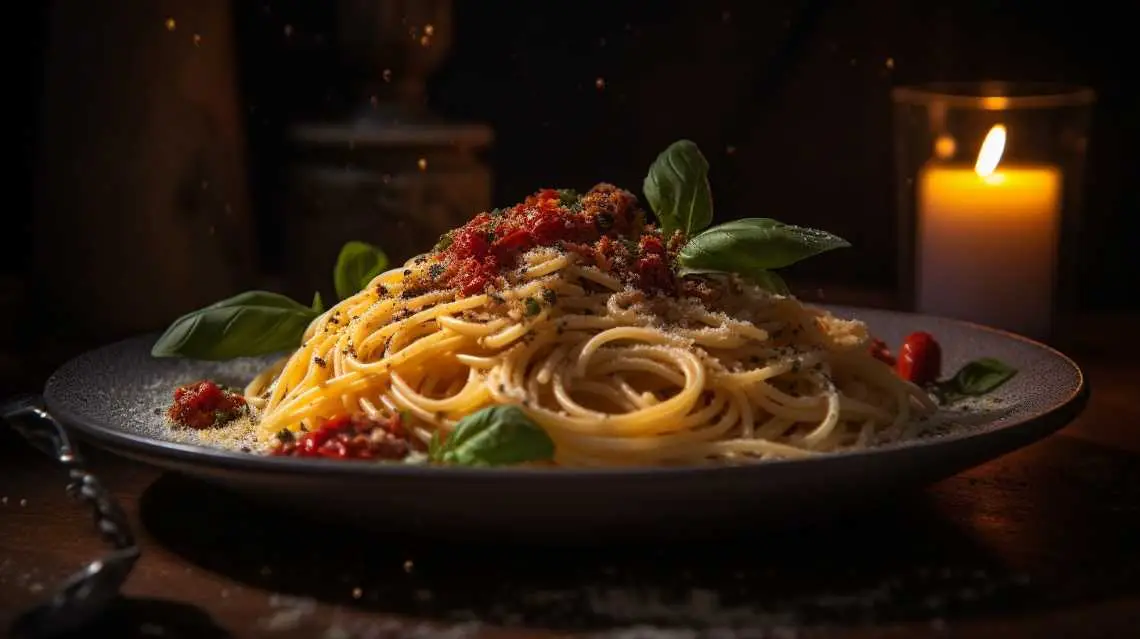
Nutrition Facts (per serving):
Calories: 420
Protein: 22g
Fat: 15g
Carbohydrates: 55g
Fiber: 5g
Ingredients:
– 8 oz whole wheat spaghetti
– 2 cans (3.75 oz each) of sardines in olive oil
– 1 can (14.5 oz) diced tomatoes
– 2 cloves garlic, minced
– 1/4 cup fresh basil, chopped
– 1/4 cup grated Parmesan cheese
– Red pepper flakes to taste
– Salt and pepper to taste
Instructions:
1. Cook spaghetti according to package instructions. Reserve 1/2 cup of pasta water before draining.
2. heat the oil from the sardine cans over medium heat in a large skillet.
3. Add minced garlic and cook for 1 minute until fragrant.
4. Add diced tomatoes and simmer for 5 minutes.
5. Gently break up the sardines and add them to the skillet. Cook for another 2-3 minutes.
6. Add cooked pasta to the skillet and toss to combine. Add pasta water if needed to loosen the sauce.
7. Stir in fresh basil and Parmesan cheese.
8. Season with red pepper flakes, salt, and pepper to taste.
Conclusion:
These five cheap fish dinner recipes prove eating healthy, delicious seafood doesn’t have to be expensive or complicated. From the zesty Lemon Garlic Tilapia to the comforting Sardine and Tomato Pasta, these dishes offer a variety of flavours and textures to keep your meals enjoyable and satisfying. By incorporating these affordable fish dinners into your meal rotation, you’ll save money and boost your intake of essential nutrients. So why not try these budget-friendly recipes and discover how easy and delicious cheap fish dinners can be? Your taste buds and your wallet will thank you!
resources
1. American Heart Association. (2022). Fish and Omega-3 Fatty Acids
https://www.heart.org/en/healthy-living/healthy-eating/eat-smart/fats/fish-and-omega-3-fatty-acids
This resource offers valuable information on the health benefits of consuming fish, mainly focusing on omega-3 fatty acids and their impact on heart health. It also provides recommendations for fish consumption and discusses various types of fish.
2. Monterey Bay Aquarium Seafood Watch. (2023). Best Choice Seafood.
https://www.seafoodwatch.org/recommendations/download-consumer-guides
The Seafood Watch program provides comprehensive guides on sustainable seafood choices. This resource can help readers select environmentally friendly and often more affordable fish options for their meals.
3. U.S. Department of Agriculture. (2022). FoodData Central.
The USDA’s FoodData Central database offers detailed nutritional information for various types of fish and seafood. This resource can be used to verify and expand upon the nutritional facts provided in the recipes.
These resources provide scientific backing for the health benefits of fish consumption, guidance on sustainable choices, and accurate nutritional information, which can be valuable for readers looking to incorporate more affordable fish options into their diets.

